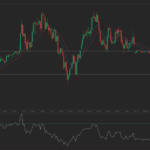
Yesterday’s trade (in GMT terms) saw USD/CAD within the range of 1.3209-1.3288. The pair closed at 1.3276, inching up 0.08% compared to Tuesdays close. It has been the 187th gain in the past 358 trading days and also a second consecutive one. The major pair has extended its advance to 1.13% so far during the current month, following a 0.18% gain in September.
At 8:31 GMT today USD/CAD was edging up 0.14% on the day to trade at 1.3295. The pair touched a daily high at 1.3307 during early European trade and a daily low at 1.3268 during the early phase of the Asian trading session.
On Thursday USD/CAD trading may be influenced by the following macroeconomic reports and other events as listed below.
Fundamentals
United States
Initial, Continuing Jobless Claims
The number of people in the United States, who filed for unemployment assistance for the first time during the business week ended on October 7th, probably rose to 254 000, according to market consensus, from 249 000 in the preceding week. The latter has been the lowest number of claims since mid-April.
The 4-week moving average, an indicator lacking seasonal effects, was 253 500, marking a decrease by 2 500 compared to the preceding week’s unrevised average. It has been the lowest average since 1973.
The business week, which ended on September 30th, has been the 83rd consecutive week, when jobless claims stood below the 300 000 threshold, which suggested a healthy labor market. It has been the longest streak since 1970.
Initial jobless claims number is a short-term indicator, reflecting lay-offs in the country. In case the number of claims met expectations or increased further, this would have a moderate bearish effect on the US dollar.
The number of continuing jobless claims probably rose to the seasonally adjusted 2 074 000 during the business week ended on September 30th, according to the median forecast by experts, from 2 058 000 in the preceding week. The latter represented a decrease by 6 000 compared to the revised up number of claims reported in the week ended on September 16th. It has also been the lowest level for insured unemployment since July 1st 2000, when 2 052 000 claims were reported. This indicator reflects the actual number of people unemployed and currently receiving unemployment benefits, who filed for unemployment assistance at least two weeks ago.
The US Department of Labor is to release the weekly report at 12:30 GMT.
Import and Export prices
Prices of imported goods in the United States probably rose 0.2% in September, according to market expectations, rebounding after a 0.2% drop in the preceding month. In August, import prices of fuel slumped 2.1%, while import prices of non-fuel items remained flat. In annual terms, import prices were 2.2% lower in August, which has been the 25th consecutive month of decline. Generally, lower import prices of goods suggest lower rates of consumer inflation.
Prices of exported goods from the United States probably rose 0.1% in September, according to market expectations, rebounding after a 0.8% slump in August. The latter has been the largest monthly decrease since January, as prices of exported agricultural products plunged 3.4%, dragged down by lower prices of soybeans, fruit, vegetables, corn and meat. Prices of exported non-agricultural products went down 0.4% in August, driven by lower prices of industrial supplies and materials, automotive vehicles, capital and consumer goods. In annual terms, export prices slumped 2.4% in August, or for a 24th month in a row. Lower prices of exported goods generally bolster demand abroad, and as US trade accounts for 20% of international trade relations, this also tends to be dollar positive.
The Department of Labor is expected to release the official numbers at 12:30 GMT.
Fed’s Harker statement
At 16:15 GMT the Federal Reserve President for Philadelphia and also a FOMC member, Patrick Harker, is expected to speak on the economic outlook in front of the World Affairs Council of Philadelphia.
Canada
New Housing Price Index
Selling prices of new homes in Canada probably rose for a 17th straight month in August, up 0.3% from a month ago, according to market expectations. In July compared to June prices went up by another 0.4%. In July, home values rose the most in the combined region of Toronto and Oshawa (up 1.0%), followed by Victoria (up 0.8%), Hamilton (up 0.7%) and Vancouver (up 0.6%). On the other hand, selling prices fell in St. Johns (down 0.3%), Windsor (down 0.2%) and Saskatoon (down 0.2%) during the same period.
The New Housing Price Index is a key indicator, reflecting the health of the Canadian housing market. Given the current state of the economy, in case prices surged more than anticipated, this would be an indication of a stronger consumer confidence and would, therefore, have a limited-to-moderate bullish effect on the local dollar. Statistics Canada will release the official report at 12:30 GMT.
Bond Yield Spread
The yield on Canada’s 2-year government bonds went up as high as 0.618% on October 12th, or the highest level since July 21st (0.622%), after which it closed at 0.601% to lose 0.002 percentage point compared to October 11th.
Meanwhile, the yield on US 2-year government bonds climbed as high as 0.891% on October 12th, or the highest level since June 3rd (0.899%), after which it fell to 0.859% at the close to lose 1.1 basis points (0.011 percentage point) compared to October 11th.
The spread between 2-year US and 2-year Canadian bond yields, which reflects the flow of funds in a short term, narrowed to 0.258% on October 12th from 0.267% on October 11th. The October 12th yield spread has been the lowest one since October 7th, when the difference was 0.246%.
Daily, Weekly and Monthly Pivot Levels
By employing the Camarilla calculation method, the daily levels of importance for USD/CAD are presented as follows:
R1 – 1.3283
R2 – 1.3290
R3 (Range Resistance – Sell) – 1.3298
R4 (Long Breakout) – 1.3319
R5 (Breakout Target 1) – 1.3345
R6 (Breakout Target 2) – 1.3355
S1 – 1.3269
S2 – 1.3262
S3 (Range Support – Buy) – 1.3254
S4 (Short Breakout) – 1.3233
S5 (Breakout Target 1) – 1.3207
S6 (Breakout Target 2) – 1.3197
By using the traditional method of calculation, the weekly levels of importance for USD/CAD are presented as follows:
Central Pivot Point – 1.3227
R1 – 1.3385
R2 – 1.3473
R3 – 1.3631
R4 – 1.3790
S1 – 1.3139
S2 – 1.2981
S3 – 1.2893
S4 – 1.2806
In monthly terms, for USD/CAD we have the following pivots:
Central Pivot Point – 1.3077
R1 – 1.3332
R2 – 1.3535
R3 – 1.3790
R4 – 1.4044
S1 – 1.2874
S2 – 1.2619
S3 – 1.2416
S4 – 1.2212





